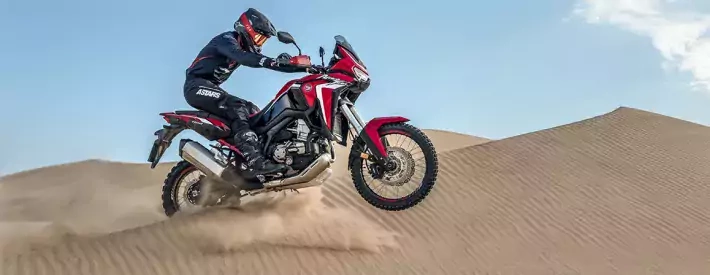Inside Honda’s DCT

It’s been over a decade since Honda introduced dual-clutch transmission technology to its bike line-up. The system’s chief engineer explains how it works and why it’s here to stay.
It’s now been over a decade since Honda introduced its Dual Clutch Transmission (DCT) technology in its motorcycle line-up, starting on the VFR1200F sports tourer. And while traditionalists may say it’s a system that shouldn’t be used on bikes, sales tell another story.
In total, over 140,000 machines with DCT have been sold in Europe, and in 2019, 45% of Africa Twins, 52% of NC750X’s and 67% of Gold Wings were the DCT version. Someone thinks DCTs are a worthwhile option then. Which is why the latest line-up of Honda motorbikes continues to include DCT options.
So, what does the technology’s chief engineer think of the system, Dai Arai explains everything, from the very beginning…
What was the starting point for dual-clutch technology?
Before my time at Honda, there were other automatic transmissions such as the Hondamatic gearbox in the 1970s which relied on a torque converter, and the Human Friendly Transmission on the DN01.
So, before the VFR1200F came with the first DCT, the idea of making an automatic transmission was around for many years. The big difference with DCT is that it involves much less losses than the previous systems, so it gives a much more direct and sporty feeling.
What was the biggest problem developing the technology?
Everything was a real struggle. No one had ever done it before, so it was difficult from both the hardware and software point of view. It was really the first-time transmission engineers had been involved in electronic controls.
With the hardware, we had to develop a crankshaft case that could be used for both DCT and manual transmission engines, to allow us to prepare variants in the same frame. We used two main shafts with one inside the other to keep the package compact. Giving that small package the required strength and durability was a big challenge.
There was also the challenge of reducing the noise of the gear shift. Because the gear mechanism itself is the same as a manual bike, the DCT makes the exact same ‘pre-engagement’ noise from the gear dogs as on a manual shift. For some riders, hearing this shifting sound in automatic modes without the normal manual inputs into a gear change could sound strange, so reducing that sound was a big challenge.
On the software side, programming the gear shift schedules for this new kind of technology was a real challenge. No one had attempted to make such a system, and it takes thousands of hours to come up with the right programmes for the shift schedules.
What’s been the biggest single improvement to the DCT over the past decade?
One of the first big steps was the automatic return to Automatic mode if you used the manual triggers as an override to select a gear. It’s a lot of programming to make the return to automatic as intuitive as possible, because you have to calculate the riding situation and therefore the rider’s intention – was it a downshift coming into a tight corner, a downshift to overtake on a straight road. It’s not just a question of returning the system to Automatic after a certain number of seconds.
Later, we refined the way that the throttle blips on the downshift to accurately match the revs and make those shifts really smooth. These changes involved a lot of synchronisation with the fuel-injection controls.
We also introduced the Adaptive Clutch Capability Control which uses the electronic control of the DCT system to slip the clutch a little when the throttle position is changed initially from a fully closed or fully opened position. That really helped smooth out the bike behaviour.
On the other hand, the ‘G’ switch introduced on the CRF1000L Africa Twin and later the X-ADV reduces the amount of clutch slip to give a more direct feeling for rear wheel traction. Especially off-road, this can allow riders to do controlled slides.
We’ve also linked the system with riding modes thanks to Throttle by Wire on the Gold Wing, which also helps to shorten the shifting time.
And on the latest CRF1100L Africa Twin, linking with the IMU really helps refine the gear shift timing through corners, as the IMU gives definitive information about lean angle.
How is control differentiated model by model?
Mainly, the different programmes for the shift timing. Each model is different. For example, the shift pattern on the X-ADV is much sportier than on the Integra, as it upshifts at higher rpm and downshifts at higher rpm for more engine braking.
Every single DCT model is programmed with a different shift timing pattern to add character and taste in the riding feel.
What application for DCT would you like to see next?
Personally, I’d love to see DCT on our Dakar Rally bike. That kind of riding – where fatigue is possible, and concentration so important – means the system has a big benefit.
Off-road, people are often surprised at how much DCT can help them – working a clutch lever standing up is not so easy, and uses up a lot of energy and concentration. Also, of course, with DCT the rider cannot stall in difficult situations.




